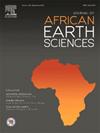Numerical stratigraphic forward modelling is useful to understand and reconstruct the relative sea-level and sediment supply history responsible for particular strata. This analysis uses BARSIM, a simple 2D forward stratigraphic process-response model that simulates wave and storm processes, applied with an inverse modelling optimisation method to better understand the history of Pleistocene strata in the Achakkar basin of the Tangier region, Morocco. Observations of grain size and bed thickness in four outcrop vertical sections are matched with BARSIM model output to estimate the lowest-error best-fit relative sea level and sediment supply histories that may have controlled deposition of the observed strata assuming deposition over a 10 ky period, consistent with available dating from outcrop sections. The best-fit relative sea level history drops from 4.88 to −2.82 m with two lower-amplitude highstands in between, most likely representing interglacial eustatic and tectonic event. The best-fit sediment supply is variable through time and different for each vertical section, with greatest variation from 11.7 to 2.11 m2y-1 over the 10 ky interval in the north-east vertical section. The spatial and temporal variation of sediment supply in the four vertical sections represents typically dynamic depositional conditions in shallow marine nearshore areas. On the other hand, it can indicate high stratigraphic incompleteness caused by periods of non-deposition or erosion with temporal variations in sediment supply. The optimum way for the simple model to reproduce short intervals of high sedimentation rate separated by longer periods of hiatus and deposition followed by erosion results in a discontinuous stratigraphic record.


